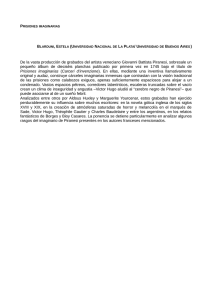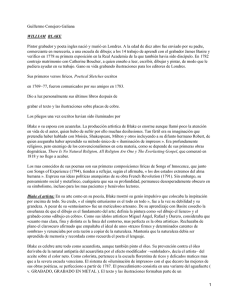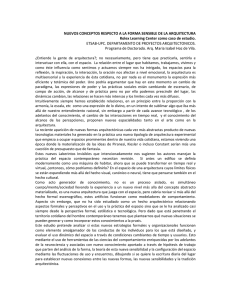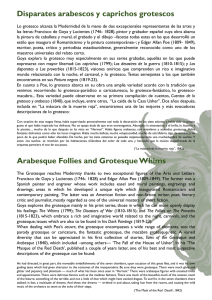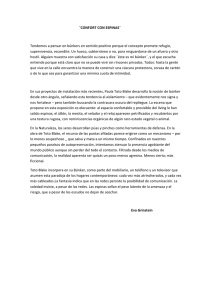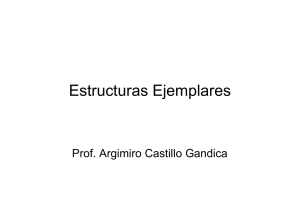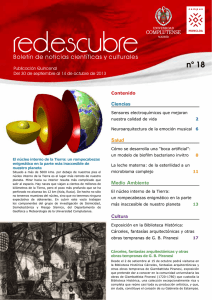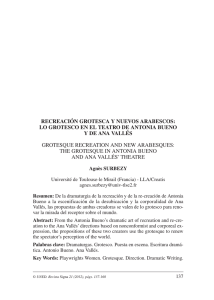4) Invenciones y fantasías en los albores del Romanticismo
Anuncio
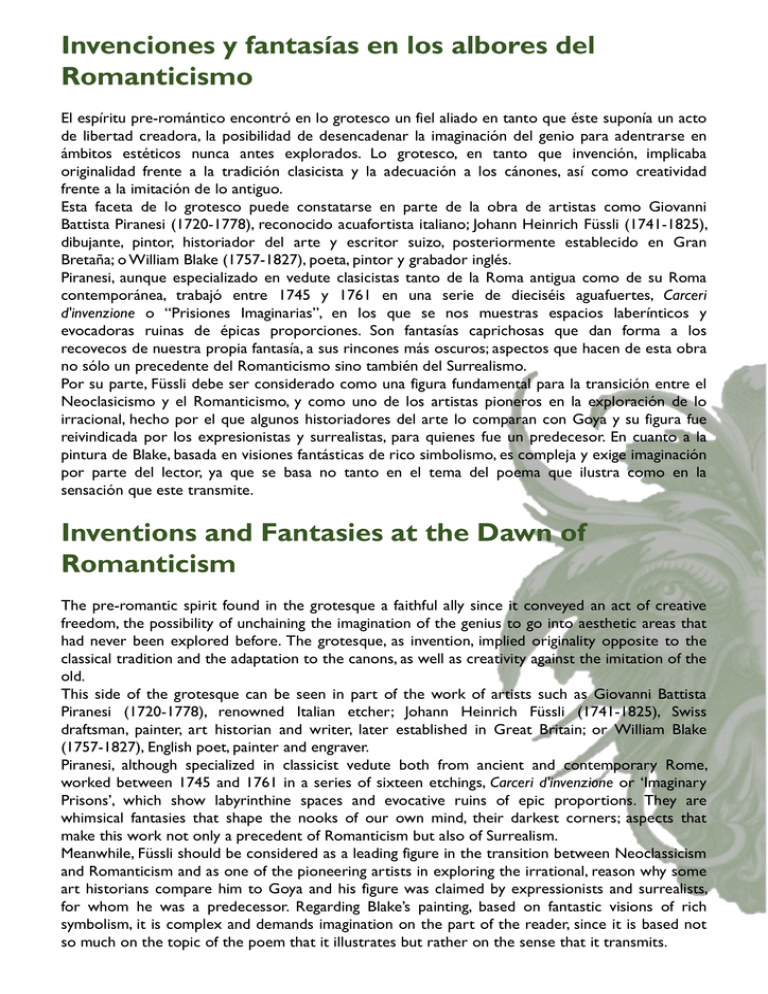
Invenciones y fantasías en los albores del Romanticismo El espíritu pre-romántico encontró en lo grotesco un fiel aliado en tanto que éste suponía un acto de libertad creadora, la posibilidad de desencadenar la imaginación del genio para adentrarse en ámbitos estéticos nunca antes explorados. Lo grotesco, en tanto que invención, implicaba originalidad frente a la tradición clasicista y la adecuación a los cánones, así como creatividad frente a la imitación de lo antiguo. Esta faceta de lo grotesco puede constatarse en parte de la obra de artistas como Giovanni Battista Piranesi (1720-1778), reconocido acuafortista italiano; Johann Heinrich Füssli (1741-1825), dibujante, pintor, historiador del arte y escritor suizo, posteriormente establecido en Gran Bretaña; o William Blake (1757-1827), poeta, pintor y grabador inglés. Piranesi, aunque especializado en vedute clasicistas tanto de la Roma antigua como de su Roma contemporánea, trabajó entre 1745 y 1761 en una serie de dieciséis aguafuertes, Carceri d'invenzione o “Prisiones Imaginarias”, en los que se nos muestras espacios laberínticos y evocadoras ruinas de épicas proporciones. Son fantasías caprichosas que dan forma a los recovecos de nuestra propia fantasía, a sus rincones más oscuros; aspectos que hacen de esta obra no sólo un precedente del Romanticismo sino también del Surrealismo. Por su parte, Füssli debe ser considerado como una figura fundamental para la transición entre el Neoclasicismo y el Romanticismo, y como uno de los artistas pioneros en la exploración de lo irracional, hecho por el que algunos historiadores del arte lo comparan con Goya y su figura fue reivindicada por los expresionistas y surrealistas, para quienes fue un predecesor. En cuanto a la pintura de Blake, basada en visiones fantásticas de rico simbolismo, es compleja y exige imaginación por parte del lector, ya que se basa no tanto en el tema del poema que ilustra como en la sensación que este transmite. Inventions and Fantasies at the Dawn of Romanticism The pre-romantic spirit found in the grotesque a faithful ally since it conveyed an act of creative freedom, the possibility of unchaining the imagination of the genius to go into aesthetic areas that had never been explored before. The grotesque, as invention, implied originality opposite to the classical tradition and the adaptation to the canons, as well as creativity against the imitation of the old. This side of the grotesque can be seen in part of the work of artists such as Giovanni Battista Piranesi (1720-1778), renowned Italian etcher; Johann Heinrich Füssli (1741-1825), Swiss draftsman, painter, art historian and writer, later established in Great Britain; or William Blake (1757-1827), English poet, painter and engraver. Piranesi, although specialized in classicist vedute both from ancient and contemporary Rome, worked between 1745 and 1761 in a series of sixteen etchings, Carceri d'invenzione or ‘Imaginary Prisons’, which show labyrinthine spaces and evocative ruins of epic proportions. They are whimsical fantasies that shape the nooks of our own mind, their darkest corners; aspects that make this work not only a precedent of Romanticism but also of Surrealism. Meanwhile, Füssli should be considered as a leading figure in the transition between Neoclassicism and Romanticism and as one of the pioneering artists in exploring the irrational, reason why some art historians compare him to Goya and his figure was claimed by expressionists and surrealists, for whom he was a predecessor. Regarding Blake’s painting, based on fantastic visions of rich symbolism, it is complex and demands imagination on the part of the reader, since it is based not so much on the topic of the poem that it illustrates but rather on the sense that it transmits.
